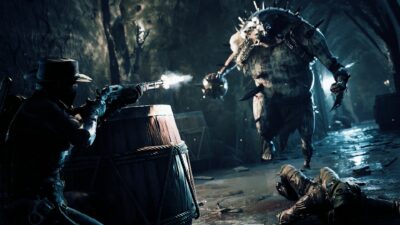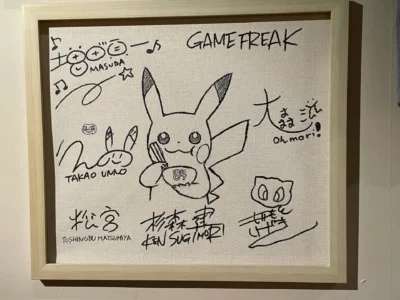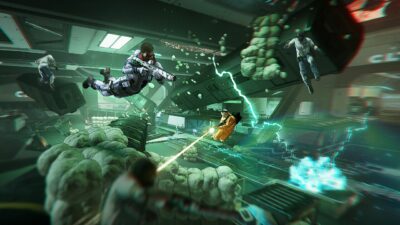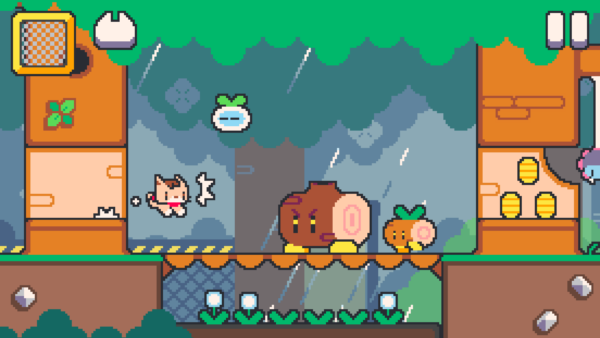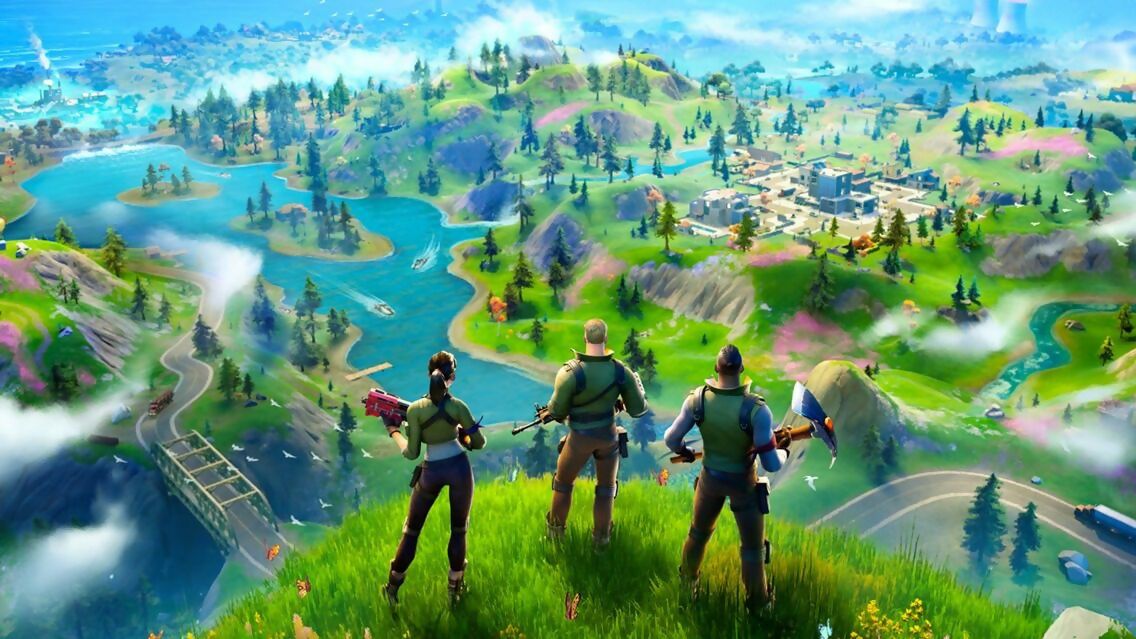
Since PlayerUnknown’s Battlegrounds became the surprise hit of 2017, selling over ten million copies while still in Early Access, the popularity of the battle royale genre has continued to grow.
With over 250 million registered players across a whole host of platforms, Fortnite is currently the biggest video game in the world, netting Epic an estimated £1.85 billion in revenue for 2018. These are eye-watering numbers for a genre named after a cult Japanese movie from 2000 that quietly developed in the background of the modding community for much of this decade, beginning with the ‘Survival Games’ Minecraft servers in 2012.
This eventually led to PUBG, launched in 2017, which saw creator Brendan Greene develop a battle royale mod for open-world survival game DayZ – itself a mod of tactical military shooter, ARMA 2. It was, considering the genre’s current ubiquity, a surprisingly measured and organic growth before reaching its final form.
In the wake of the genre’s seemingly overnight success, it’s no surprise that everyone else wants in on the action. In the past year, mainstream studios have parachuted into the fray, from Call of Duty: Black Ops 4’s ‘Blackout’ to EA adding a battle royale mode to Battlefield V, as well as launching an entire new game, Apex Legends.
But while these games essentially bring big-budget gloss to a genre known (and even admired) for its jankiness, these are also all inherently shooters. Apex Legends arguably delivers the most polished take on the battle royale to date – as well as implementing excellent traversal and an inspired ping system that vastly improves communication for those of us who’d prefer not to put on a headset – but it nonetheless follows the formula of its forebears.
You’ve got a mass of players (Apex cuts this from the ‘standard’ 100 to 60) dropping into a map in a fight to the death, with the last one standing named the victor; loot is random in terms of its location as well as in its power and rarity; then there’s the open island map that shrinks over time, gradually forcing players into ever tighter spaces for direct confrontation.
It’s enough of a unique proposition that PUBG Corporation – the studio behind the eponymous game – felt the need to file a lawsuit against Epic Games in January 2018, claiming Fortnite was a copyright infringement of its own game. While the suit has since been dropped, it goes some way to showing how new the battle royale genre felt, and how important it was to those in a position to make a lot of money from it.
Shoot to kill
Little surprise, then, that mainstream studios like Treyarch or Respawn are quite happy to simply iterate and refine the battle royale formula, albeit with the excellent gunplay mechanics they’re renowned for. Essentially, battle royale is a new popular genre, just like the MOBA, the survival game, or the hero shooter was before it.
Still, a refreshing number of developers are finding ways to reinterpret the battle royale. After all, it’s vital that designers find new ways to make their games stand out in an increasingly crowded genre.

While realistic military sims were one of PUBG’s reference points, other battle royales have doubled down on its more irreverent qualities.
In April 2018, Finnish developer Housemarque – which previously made acclaimed arcade-inspired games like Resogun and Nex Machina – announced its new project: the multiplayer, third-person shooter, Stormdivers. The game shares a number of commonalities with the battle royale genre, even if its creators haven’t explicitly referred to it as such.
According to producer Tuomas Hakkarainen, Stormdivers’ genesis began as early as 2015 under the working title ‘Killing Games’ – it was an original pitch from one of the studio’s artists, who described it as a third-person shooter riff on Smash Bros. “By the time it was playable, DayZ already existed and also influenced the development,” says Hakkarainen. “However, ‘Killing Games’ was much more fast-paced and arcade-like by design.”
When PUBG blew up, it naturally became a heavy influence on Housemarque. By then, Stormdivers was already being described online as a battle royale – this was, incidentally, before any in-game footage had been revealed – so the studio decided to just go with the flow. The developer still aims to differentiate the game from the competition, however, most notably by replacing the battle royale’s slowly shrinking circle of death with a more dynamic storm.
“The storms in Stormdivers are much more lifelike and unpredictable,” explains Hakkarainen. “The shape of the storm is never just a simple circle. The nano-storm shrinks from different areas with different speeds, depending on its intensity.”

While Stormdivers seems like a battle royale gamble, Housemarque haven’t bet all their chips on it, as the studio is also working on another unannounced triple-A project.
In other words, rather than just following a timer alerting you when the playing area is about to shrink, players need to keep an eye on the storm and their surroundings, which also keeps them on the move.
There’s also an emphasis on traversal, which is why every character has a glider – adding verticality and aerial battles to the mix – while a class-based system gives characters their own abilities, from the Scavenger’s ability to turn temporarily invisible to the Juggernaut’s teleportation.
Unpredictable environmental events like an eclipse that lowers visibility or a tornado that whips up loot into the air, but also supercharges your glider, are all designed to keep players on their toes. Or, as Hakkarainen succinctly puts it: “The Housemarque DNA – fast-paced movement and proactive playstyle – can still be found in Stormdivers.”
A break from gunplay
The downside for Housemarque is that, while Stormdivers doesn’t yet have a release date, its rivals are already charging ahead. Some of its outstanding features, like character classes and traversal, have already been implemented in Apex Legends, while the constant rollout of new seasons in Fortnite (most recently with the launch of Chapter 2) is creating more changes and events than most players can keep up with. Stormdivers is also still fundamentally a shooter, which means it will always be compared in some way to its high-profile rivals.
This is where a game like Spellbreak seeks to change things up by ditching modern or sci-fi military aesthetics for high fantasy. In game terms, firing a gun might not be much different than casting spells using projectiles, though Proletariat CEO Seth Sivak acknowledges the team had experimented with a wider range of combat early on.
“It’s been a tale of woe in making fantasy combat, specifically melee, actually work,” he says. “It turns out that magic arrows were the things people liked using in our early prototypes, and that eventually evolved into magic spells.”

Developer Proletariat also plans to incorporate other RPG elements into Spellbreak, including quests, guilds, and even NPCs.
The developer hasn’t merely replaced bullets with lightning bolts, though, as the over-the-top feeling of being a powerful battlemage means the game can deviate from the constraints of a traditional shooter, whether it’s dishing out large Area of Effect blasts or throwing a giant boulder at your opponent.
Spellbreak also employs RPG elements, so not only do you have eleven different playable classes with their own passive and active abilities, but you can also combine elements: a fire spell and poison cloud can create a large poisonous fireball, for example.
The way players become more powerful over the course of a match resembles the progress in a MOBA, although Spellbreak still follows the conventions of battle royale – a shrinking playing area, random loot, and last player standing can all be found here.

Spellbreak is available exclusively through the Epic Game Store – evidently, Epic don’t feel threatened by more competition, and are happy to foster it.
More importantly, Spellbreak seems to be attracting a player base that’s new to the battle royale genre. “We’ve found that our fantasy setting, RPG elements, and art style appeal to a wide range of players who might not otherwise have tried a battle royale game,” says Sivak. “It’s been vital to establishing such a large player community at this early stage of development.”
Nonetheless, like Stormdivers, the maximum number of players per match in Spellbreak is set at a modest 40 – assuming you can manage to find enough players.
It’s still early days for Proletariat, which is selling the game exclusively on the Epic Games Store at a whopping £44.99 – a big ask for what’s essentially a game in Closed Alpha, when the majority of battle royale games are operating as free-to-play.
Something different
Ironically, the same month Apex Legends dropped and demonstrated what a refined triple-A standard battle royale could be like, the very notion of what a battle royale game is was entirely redefined. Tetris remains one of the most popular games ever, played by people of all ages and backgrounds, though mostly as a solitary line-clearing pastime.
So the idea of it becoming a 99-player battle royale to promote the Nintendo Switch Online service sounded almost like an early April Fools’ joke.
Yet competitive multiplayer has existed for the puzzler since as far back as when you could connect two Game Boys with a link cable. Tetris 99 merely takes the series’ niche hardcore multiplayer techniques and introduces them to a wider audience.

Tetris 99 genuinely has all the drama of a battle royale, as players are gradually whittled down to one lone victor.
The idea of combining the competitive side of Tetris with the battle royale genre came from Arika, a Japanese developer already known for its Tetris: The Grand Master arcade series. In an interview with Japanese website 4Gamer, director Ryuichi Nakada says planning for the game started in April 2018, while early on he had already envisioned the game playing out with a standard Tetris panel while your fellow competitors’ screens lined up on either side.
“I didn’t actually get the go-ahead to start doing research into the battle royale genre until afterwards,” he says.
Yet despite the obvious mechanical differences, it’s surprising how much Tetris 99 flows with the similar rhythm and drama of any other battle royale, from how building blocks and queuing up devastating ‘I’ or ‘T’ pieces is akin to gathering resources before the inevitable skirmish, to the way game speed increases as fewer players remain – mimicking the way a shrinking map intensifies confrontation in a battle royale.

Play Tetris 99 in the Switch’s handheld mode, and you can use the touchscreen to target specific players.
Even the badge system, which multiplies the amount of garbage you can send to your rivals, is essentially like collecting rare powerful loot from a defeated opponent, though Tetris 99 also uniquely benefits from a counter system that allows you to send garbage to multiple players that are targeting you at the same time.
These ultimately add to making Tetris 99 a more skill-focused game encouraging aggressive play – after all, there’s no equivalent of toilets or bushes to hide in, especially when every player’s screen is visible. Not just subverting the expectations of battle royale, Tetris 99 even subverts expectations of the puzzle genre, often considered a more casual pastime.
Mass participation
Ultimately, Tetris 99’s successes are how it remains a universally compelling game, even with these new mechanics, and how it demonstrates battle royale’s appeal beyond the shooter mechanics other developers are eager to jump straight to.
For Jeff Tanton, creative director at Mediatonic, battle royale was a genre he was wary of getting involved in – to the point he had specifically instructed his team not to pitch him titles in the style. “And then one of my designers comes back to me and says ‘Look, it’s a battle royale… but!’,” he laughs.
In truth, Fall Guys isn’t really so much a battle royale as it is inspired by the high-concept television game shows that have existed for years before, notably Takeshi’s Castle (host Takeshi Kitano has a starring role in the Battle Royale film, coincidentally), It’s a Knockout, and Total Wipeout.
Just like those shows, Fall Guys involves a large mass of players running through multiple rounds of tightly constructed and easy-to-understand minigames, the number of players naturally shrinking after each round of eliminations until the final lucky few run the final obstacle course of ‘Fall Mountain’, after which only one will be crowned the winner.

Fall Guys does away with the killing aspect of the battle royale genre. Its titular competitors get knocked down and just bounce back up again.
There’s more of a comparison to Mario Party or WarioWare than battle royale shooters, then, but they nonetheless share a commonality that made the idea viable.
“Battle royales inherently have violence within them, but there are a million other places players can go to if they want to shoot something,” says Tanton. “So for us, two things appeal: mass participation and short time frames. Battle royales have made that commonplace and acceptable, so that’s been massively influential for us, being able to pitch Fall Guys, and for people to understand why that would be appealing.”
Much like Tetris 99, Fall Guys’ simple controls and objectives are immediately accessible to a wider audience that may not be interested in the standard battle royale/shooter mix.
Fall Guy’s premise also has an instant appeal for Mediatonic; its developers jokingly refer to it as a battle royale game they might not be terrible at. The design of the titular fall guys helps level the playing field, with their pudgy mascot physique making them equally terrible at running, climbing, and jumping; a nod to the aforementioned game shows, where contestants also dress up in ridiculous costumes that impede them during their physical challenges.
“These games are funniest when people are falling over and failing,” says Tanton. “So we’re not trying to create elite super-machines, but rather something that’s adorable, uniquely terrible, but [that we] still so badly want to win.”
Of course, when compared to Fortnite and other battle royale shooters with their hundreds of millions of players, Fall Guys could be regarded as a minor deviation. Tetris 99 has attracted 2.8 million players – an impressive figure, considering there are about ten million Switch Online subscribers – but even uptake that high is barely a dent in Fortnite’s 250 million player accounts.

‘Door Dash’ was the first minigame devised for Fall Guys. “It’s ridiculously simple, yet the first time we playtested it, people were slamming at their desks for one more go,” says Jeff Tanton.
What it does say, though, is that there may well be an audience there for the upcoming – and entirely unrelated to Tetris 99 – Tetris Royale.
Ultimately, while there’s a rush to cash in on this still relatively fresh genre, there are these small positive signs showing developers they needn’t stringently follow PUBG’s formula to define what the battle royale can be.
Tanton goes further: “You can probably lose the ‘battle’ aspect of it,” he suggests. “It can even be co-operative and not competitive; it doesn’t need to be about whittling people down from ‘x’ number to one. Ultimately, for me, it’s about mass participation, and the time you put in is always worth it. If you’re knocked out a minute into a game, that’s OK as you’ve only dedicated a minute.
“But if you make it for 15 minutes, perfectly synchronised, the longer the game goes on, the more you’re invested in it. The longer you play it, the more you get out of it, and you’re never left disappointed.”


